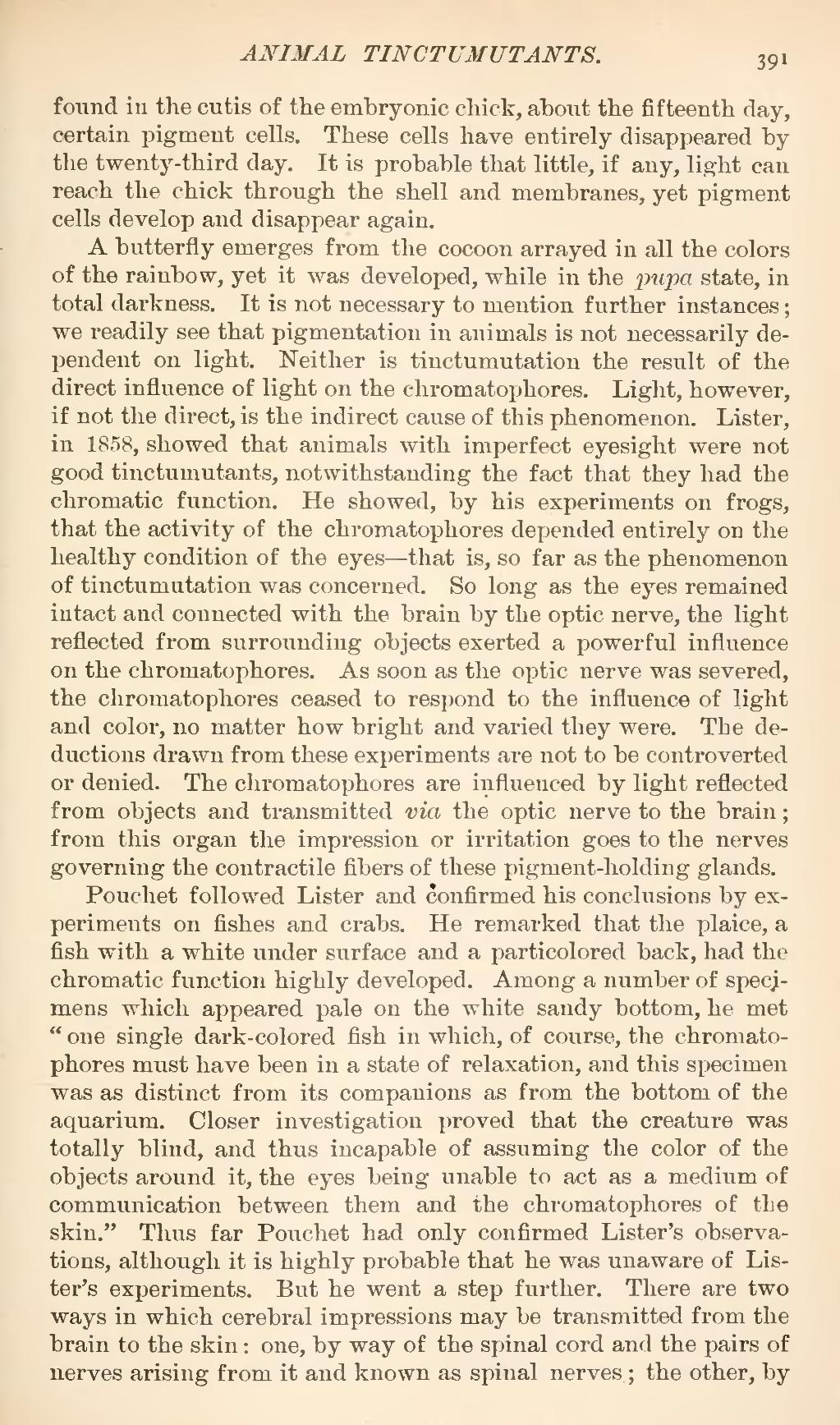found in the cutis of the embryonic chick, about the fifteenth day, certain pigment cells. These cells have entirely disappeared by the twenty-third day. It is probable that little, if any, light can reach the chick through the shell and membranes, yet pigment cells develop and disappear again.
A butterfly emerges from the cocoon arrayed in all the colors of the rainbow, yet it was developed, while in the pupa state, in total darkness. It is not necessary to mention further instances; we readily see that pigmentation in animals is not necessarily dependent on light. Neither is tinctumutation the result of the direct influence of light on the chromatophores. Light, however, if not the direct, is the indirect cause of this phenomenon. Lister, in 1858, showed that animals with imperfect eyesight were not good tinctumutants, notwithstanding the fact that they had the chromatic function. He showed, by his experiments on frogs, that the activity of the chromatophores depended entirely on the healthy condition of the eyes—that is, so far as the phenomenon of tinctumutation was concerned. So long as the eyes remained intact and connected with the brain by the optic nerve, the light reflected from surrounding objects exerted a powerful influence on the chromatophores. As soon as the optic nerve was severed, the chromatophores ceased to respond to the influence of light and color, no matter how bright and varied they were. The deductions drawn from these experiments are not to be controverted or denied. The chromatophores are influenced by light reflected from objects and transmitted via the optic nerve to the brain; from this organ the impression or irritation goes to the nerves governing the contractile fibers of these pigment-holding glands.
Pouchet followed Lister and confirmed his conclusions by experiments on fishes and crabs. He remarked that the plaice, a fish with a white under surface and a particolored back, had the chromatic function highly developed. Among a number of specimens which appeared pale on the white sandy bottom, he met "one single dark-colored fish in which, of course, the chromatophores must have been in a state of relaxation, and this specimen was as distinct from its companions as from the bottom of the aquarium. Closer investigation proved that the creature was totally blind, and thus incapable of assuming the color of the objects around it, the eyes being unable to act as a medium of communication between them and the chromatophores of the skin." Thus far Pouchet had only confirmed Lister's observations, although it is highly probable that he was unaware of Lister's experiments. But he went a step further. There are two ways in which cerebral impressions may be transmitted from the brain to the skin: one, by way of the spinal cord and the pairs of nerves arising from it and known as spinal nerves.; the other, by
